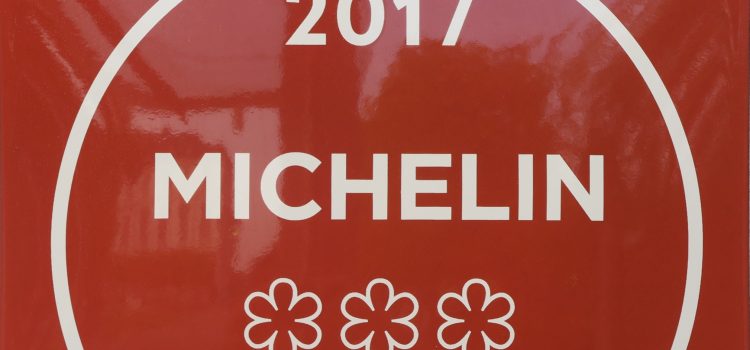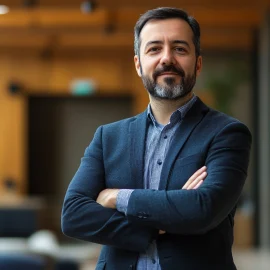

This article is an excerpt from the Shortform book guide to "Unreasonable Hospitality" by Will Guidara. Shortform has the world's best summaries and analyses of books you should be reading.
Like this article? Sign up for a free trial here.
How did Eleven Madison Park get three Michelin Stars? What does it take to have a three-star fine-dining restaurant?
Will Guidara joined Eleven Madison Park (EMP) in 2006 to transform the casual brasserie into a three-star fine-dining restaurant worthy of its spectacular location. By 2007, Guidara achieved that goal.
We’ll detail what Guidara did to gain Eleven Madison Park’s Michelin Stars.
#1: Clarify and Communicate Your Priorities
When Guidara joined Eleven Madison Park, Michelin Stars were far out of reach. The restaurant was suffering from poor relationships and erratic levels of service. In an effort to transform the brasserie into a three-star restaurant, Meyer had brought on several service professionals who’d trained in fine-dining restaurants and so brought with them a set of expectations regarding how a fine-dining restaurant is run. The original EMP staff bristled at these expectations, which were both new and confusing given that different managers had different standards for the same thing. For example, one server was made to hold a tray in two different ways by two different managers.
After spending some time learning how EMP ran things and why it wasn’t working, Guidara’s focus turned to clarifying and communicating the restaurant’s priorities. Guidara started by having a daily 30-minute meeting shortly before the restaurant opened. This meeting served two important purposes: First, it made clear to the staff what they needed to know—since Guidara required the managers to share typewritten handouts that he’d pre-approved. Second, it gave Guidara a regular opportunity to reinforce the culture he was trying to build; Guidara regularly praised employees’ successes and shared stories to inspire a good night’s work.
Then, several months into his tenure, Guidara invited all the staff to a “strategic planning meeting.” He wanted the entire team to have a voice in deciding what type of restaurant they wanted to build. After some discussion, the team landed on the pillars that would define their culture—notably, excellence and hospitality. Guidara contends that these two concepts are somewhat contradictory, given that excellence involves meeting an exacting standard while hospitality involves connecting with the guest—sometimes to the detriment of that exacting standard. But acknowledging that both were important gave them the tools to provide the best experience possible for their guests.
#2: Help Your Employees Succeed
Guidara knew that EMP would succeed only if they invested in the team. He assumed that most employees had something valuable to offer the restaurant, so he focused on ensuring that each employee’s position made the best use of their particular skills. For example, Guidara noticed that one poorly performing employee had excellent organizational skills, so rather than fire the employee, he reassigned him to a position that made use of those skills.
Guidara saw and took advantage of an opportunity that would both set EMP apart and support his employees. He set up “ownership programs,” which involved giving employees full control over specific aspects of the restaurant. For example, he put the server who loved beer in charge of developing EMP’s beer program. The programs benefited everybody involved. The staff liked taking on more responsibility, Guidara’s workload was reduced, the customers enjoyed the results (like the better beer that EMP served), and the customers’ happiness reflected well on the restaurant.
#3: Pay Attention to the Details
In 2006, the food critic for The New York Times appeared at the restaurant for lunch. His presence signified that Times might soon review EMP. The restaurant’s three-star review appeared in the Times nearly a year later.
Guidara attributes the three stars to EMP’s continued commitment to the details, which EMP staff demonstrated in two ways.
First, EMP staff focused on consistently mastering the smallest details. These details didn’t seem individually important, but altogether they contributed to providing an overall atmosphere of exceptional service. Guidara contends that this atmosphere was palpable not just to the guests but also to the staff and improved everybody’s experience. For example, the staff carefully curated how loudly they played the music depending on how many people were in the restaurant.
Guidara argues that seeing this consistency helped servers when they were having a difficult time due to uncontrollable circumstances—such as guests in a bad mood—as it reminded them that there were some things they still could control.
Second, EMP staff followed the “one-inch rule” that Guidara developed. Guidara points out that no matter how well you prepare something, you can mess it up at the last minute. At EMP, the staff learned to remain focused during that last “one inch” so they could execute everything perfectly instead of ruining something due to inattention in the final moments.

———End of Preview———
Like what you just read? Read the rest of the world's best book summary and analysis of Will Guidara's "Unreasonable Hospitality" at Shortform.
Here's what you'll find in our full Unreasonable Hospitality summary:
- How Will Guidara turned Eleven Madison Park into the World's Best Restaurant
- Why service-based businesses should go above and beyond for customers
- Guidara's lessons he learned from each stage of his business journey






